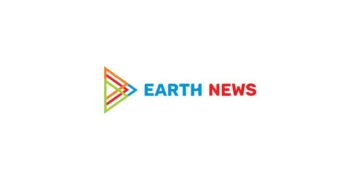In the ever-evolving landscape of medical research, the journey into the unexplored terrains of pregnancy has taken a fascinating turn with the advent of natural experiments. As the world becomes increasingly data-driven, the wealth of information gleaned from everyday experiences during pregnancy presents a treasure trove of insights that can redefine our understanding of maternal and fetal health. This article delves into the innovative methodologies and ethical considerations surrounding these natural experiments, shedding light on how they harness vast datasets to uncover patterns, inform healthcare practices, and ultimately empower expectant mothers and their families. Through the lens of science, we explore the potential of huge data to illuminate the complexities of pregnancy, merging the realms of experience and evidence in a quest for better outcomes for all.
Exploring the Richness of Natural Experiments in Pregnancy Research
Natural experiments serve as a powerful tool in pregnancy research, offering a unique lens through which to examine the myriad factors influencing maternal and fetal health. Unlike traditional experiments, which involve tight control over variables, natural experiments leverage real-world variations that occur due to circumstances outside researchers’ control. This approach allows scientists to capture data on large populations, enhancing the reliability and generalizability of findings. For example, policy changes regarding prenatal care can create distinct groups within a population—those affected by the policy and those who are not—providing a natural cohort for comparison.
One of the compelling aspects of utilizing big data from natural experiments is the opportunity to explore diverse outcomes related to pregnancy. Researchers can investigate various elements including:
- Maternal Nutrition: Understanding how access to food resources impacts fetal development.
- Environmental Factors: Examining the effects of pollution exposure on pregnancy outcomes.
- Healthcare Access: Analyzing the implications of healthcare policy changes on maternal health.
These investigations not only lead to insights about causal relationships but also identify vulnerable populations that may require targeted interventions. By unlocking the complexities of how external factors shape pregnancy experiences, researchers contribute to evidence-based policies that can enhance maternal and child health.
Furthermore, the marriage of large datasets with advanced statistical methods helps disentangle the multifactorial nature of pregnancy outcomes. With the rise of machine learning algorithms and data mining techniques, researchers can identify patterns and trends that may have previously gone unnoticed. Collaboration across disciplines, from epidemiology to public health and data science, fuels innovation in understanding these natural experiments. For instance, when analyzing data gathered from a cohort affected by a significant environmental disaster, researchers can glean insights into both acute and chronic stressors impacting pregnant individuals.

Unveiling Insights from Large-Scale Data on Maternal Health
The recent analysis of extensive datasets from various regional studies on maternal health has brought to light compelling evidence that could reshape our understanding of pregnancy outcomes. By examining natural experiments arising from significant policy changes and demographic shifts, researchers have successfully identified patterns and correlations that may influence maternal and neonatal health. This approach leverages vast amounts of observational data, enabling scientists to assess factors such as socioeconomic status, access to healthcare, and education levels with unprecedented clarity.
Among the insights uncovered, the role of prenatal care emerges as a key determinant of both maternal and infant health. Key findings include:
- Increased access to early prenatal visits correlates with lower rates of preterm births.
- Education about nutrition and healthcare practices significantly impacts maternal weight gain during pregnancy.
- Support systems, including family and community resources, enhance maternal mental health, which in turn benefits child development.
The importance of a multifaceted approach to maternal health care cannot be overstated; understanding that a combination of biological, psychological, and social factors contribute to the health of both mothers and their babies is crucial for developing effective interventions.
Furthermore, the implementation of these insights into public health policies can lead to significant improvements in maternal health outcomes. Consider the following table that outlines recent policy impacts observed from the data analysis:
| Policy Change | Observed Outcome |
|---|---|
| Expanded Medicaid Coverage | 25% reduction in maternal mortality rates |
| Increased Funding for Family Health Programs | 30% increase in women receiving postpartum care |
| Enhanced Education Initiatives | 40% improvement in knowledge regarding prenatal nutrition |
These profound insights underscore the necessity of harnessing big data to inform policies that can lead to substantive improvements in maternal health care systems. By prioritizing data-driven decision-making, stakeholders can create environments that not only support expectant mothers through better healthcare access but also foster healthy futures for their children.

Innovative Methodologies for Analyzing Pregnancy Data
Recent advancements in data science have opened new avenues for analyzing pregnancy-related data from natural experiments. These methodologies leverage immense datasets derived from various sources, including healthcare systems, social media, and wearable technology, enabling researchers to extract valuable insights about maternal and infant health. By employing techniques such as machine learning and big data analytics, researchers can identify patterns and correlations that were previously obscured in traditional studies. This innovative approach not only enhances the understanding of pregnancy outcomes but also fosters the development of personalized healthcare interventions.
One of the key methodologies utilized in this realm is longitudinal data analysis, which tracks changes over time within the same individuals or cohorts. This technique allows for the examination of how maternal behaviors—like nutrition, stress levels, and healthcare access—evolve throughout pregnancy and their subsequent influence on birth outcomes. Additionally, integrating geospatial analysis empowers researchers to visualize trends and disparities in pregnancy experiences across different regions, highlighting potential barriers to proper prenatal care.
As these methodologies evolve, the incorporation of natural language processing (NLP) into the analysis framework is becoming increasingly prominent. NLP enables the examination of unstructured data, such as physician notes or online forums, to uncover sentiments and experiences that might not be captured through quantitative means. This multi-faceted approach can be summarized in the following table:
| Methodology | Benefits | Applications |
|---|---|---|
| Machine Learning | Identifies complex patterns in large datasets | Predicting pregnancy complications |
| Longitudinal Data Analysis | Tracks changes over time within cohorts | Studying the impact of lifestyle on pregnancy |
| Geospatial Analysis | Visualizes regional health disparities | Mapping access to prenatal care |
| Natural Language Processing | Analyzes sentiments and experiences from text data | Exploring patient feedback and concerns |

Recommendations for Future Research and Policy Implications
Future research holds immense potential in the realm of pregnancy natural experiments, specifically regarding the use of big data to enhance our understanding of maternal and fetal health outcomes. Researchers should focus on developing robust methodologies that enable the extraction and analysis of large datasets while ensuring the confidentiality and ethical treatment of sensitive health information. Key recommendations include:
- Utilizing interdisciplinary approaches: Collaboration between epidemiologists, data scientists, and healthcare professionals can significantly enrich the insights derived from data.
- Incorporating diverse populations: It is crucial to ensure that studies account for various demographic factors, such as socio-economic status, ethnicity, and geographic location, to provide a well-rounded perspective.
- Leveraging machine learning techniques: Advanced analytical techniques can reveal hidden patterns and correlations that traditional methods might overlook.
Policy implications stemming from these research initiatives can help shape a healthier future for mothers and children. Stakeholders, including healthcare providers and policymakers, should prioritize the development of evidence-based frameworks that utilize insights gained from large-scale data analyses. Considerations for effective policy development should include:
| Policy Focus Area | Recommended Actions |
|---|---|
| Maternal Health Education | Promote awareness programs informed by data to improve maternal health behaviors. |
| Healthcare Access | Implement targeted interventions in underserved communities based on population data insights. |
| Data Governance | Establish guidelines ensuring ethical data use while pursuing research objectives. |
Lastly, as the landscape of digital health evolves, it becomes increasingly important to address technological barriers that may impede research and policy initiatives. Bridging the gap between traditional healthcare practices and innovative data-driven solutions will require ongoing investment in infrastructure and training. Steps to take include:
- Enhancing digital literacy: Providing training for healthcare professionals to effectively use digital tools and interpret data.
- Investing in technology: Supporting initiatives aimed at upgrading health informatics systems to accommodate large data collections.
- Stimulating public-private partnerships: Engaging collaboration between governmental bodies and private enterprises can ensure the necessary resources and expertise are pooled together.

Final Thoughts
the exploration of huge data derived from natural experiments during pregnancy presents a unique frontier in the realm of science. As researchers sift through the rich tapestry of experiences and outcomes, they uncover insights that may redefine our understanding of prenatal health, environmental influences, and the intricate interplay of genetic and social factors. This burgeoning field holds the potential to inform public health policies, enhance maternal care, and ultimately improve the wellbeing of both mothers and their children. As we stand at the intersection of technology and human experience, the journey of harnessing this vast wealth of information reminds us that each dataset tells a story—one that could lead to a healthier, more informed future for generations to come. Embracing this innovative approach, we look forward to the revelations that await us in the intricate dance of science and the miracle of life.






























